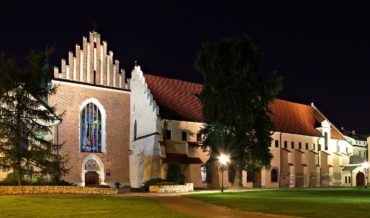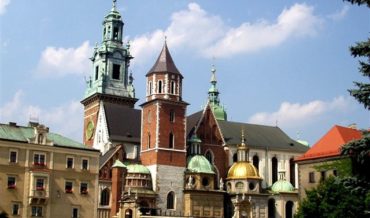Contents
Key Facts
- Polish painter born in Zielona Góra in 1733, also known as Kuntze
- Discovered while working as a kitchen assistant at Bishop Załuski's court
- Studied in Rome for 4 years at the French Academy and Scuola del Nudo
- Known as "Taddeo Polacco" (Tadeusz the Pole) by Italian contemporaries
- Created celebrated paintings for Wawel Cathedral during his Italian studies
- Served as court painter to Bishop Andrzej Stanisław Załuski in Krakow
- Died in Rome in 1793 and is buried in Church of San Andrea delle Fratte
- His works demonstrate the synthesis of Italian Baroque techniques with Polish religious traditions
Early Life and Discovery
Konicz Tadeusz, also documented under the surname Kuntze, was a distinguished Polish painter born in Zielona Góra in 1733 during the height of the Polish-Lithuanian Commonwealth's cultural renaissance. His extraordinary artistic journey began in remarkably humble circumstances, working as an assistant in the kitchen at the court of the influential bishop of Płock and canon of Kraków, Andrzej Stanisław Załuski.
The pivotal moment in young Tadeusz's life occurred when his natural painting talent was discovered during his domestic service at the bishop's court. This discovery proved transformative, as Bishop Załuski—a prominent patron of arts, sciences, and learning in 18th-century Poland and founder of one of Europe's first public libraries—immediately recognized the exceptional potential in his young servant. The bishop's decision to sponsor Tadeusz's artistic education exemplified the Enlightenment ideals of merit-based advancement that characterized progressive Polish intellectual circles of the era, much like those fostered at the Jagiellonian University.
Education in Rome: The Grand Tour Tradition
Recognizing Tadeusz's exceptional artistic abilities, Bishop Załuski arranged for him to study in Rome, which served as the undisputed artistic capital of Europe during the 18th century and the essential destination for any serious artist's education. Tadeusz spent four transformative years in Italy (approximately 1753-1757), where he received comprehensive artistic training at two of the period's most prestigious institutions:
- The French Academy in Rome (Académie de France à Rome) – established by Louis XIV in 1666, where he studied classical painting techniques, drawing from antique sculptures, and copying works by Renaissance and Baroque masters including Raphael, Michelangelo, and Caravaggio
- The Scuola del Nudo on Capitoline Hill – where he mastered figure drawing, anatomical studies, and live model work, essential skills for religious and historical painting
During his Roman sojourn, the local artistic community respectfully called him "Taddeo Polacco" (Tadeusz the Pole), reflecting both his foreign origins and his successful integration into Rome's cosmopolitan artistic environment. This intensive period of study allowed him to absorb the sophisticated techniques of Italian Renaissance masters and Baroque innovators, particularly the dramatic chiaroscuro effects and dynamic compositions that would later distinguish his mature works.
Artistic Development and Style Formation
Tadeusz's Roman education coincided with the transition from High Baroque to early Neoclassical aesthetics. His training emphasized the classical principles of composition, proportion, and idealized beauty while incorporating the emotional intensity and dramatic lighting characteristic of Baroque religious art. This unique synthesis of influences would prove particularly suitable for his later ecclesiastical commissions in Poland, where Counter-Reformation artistic principles remained influential.
Notable Works from the Italian Period
Even as a student, Tadeusz demonstrated exceptional skill that attracted significant commissions. During his Italian residency, he created two celebrated paintings specifically for Wawel Cathedral, demonstrating the extraordinarily high regard in which his rapidly developing talent was held. These early masterpieces represented a remarkable achievement for a young artist still in training and would later be recognized among Poland's most treasured ecclesiastical artworks.
The fact that these paintings were commissioned for Wawel Cathedral—Poland's most sacred site and the coronation church of Polish kings—indicates not only Tadeusz's exceptional skill but also Bishop Załuski's influential connections and confidence in his protégé's abilities.
Return to Krakow and Court Career
In 1757, Konicz returned to Krakow equipped with sophisticated international training and artistic credentials that were rare among Polish painters of the period. He immediately entered the service of his former patron, assuming the prestigious position of court painter to Bishop Załuski. This appointment provided him with financial stability, artistic freedom, and access to Poland's most distinguished ecclesiastical and noble patrons.
His role as court painter encompassed creating religious compositions, formal portraits, and decorative schemes for various churches, palaces, and religious institutions throughout Lesser Poland. Bishop Załuski's court functioned as a major cultural center during the Polish Enlightenment, and Tadeusz became a central figure in Krakow's Old Town artistic renaissance during this crucial period. His unique combination of Italian technical sophistication and deep understanding of Polish religious sensibilities created a distinctive artistic voice that resonated powerfully with local patrons while maintaining international artistic standards.
Artistic Innovation and Cultural Synthesis
Tadeusz's mature style represented a masterful synthesis of Italian Baroque techniques with Polish devotional traditions. His paintings demonstrated the dramatic lighting and emotional intensity of Caravaggio's followers, combined with the classical composition and idealized forms championed by the French Academy. This approach proved particularly effective in religious contexts, where his works conveyed both spiritual intensity and artistic sophistication.
His portraits reflected the influence of Roman portraiture traditions while capturing the distinctive character of Polish nobility and clergy. These works provide valuable visual documentation of 18th-century Polish society and demonstrate his ability to adapt international artistic conventions to local cultural requirements.
Final Years and Return to Rome
Following Bishop Załuski's death in 1758, Tadeusz lost his primary patron and protector during a period of increasing political instability in the Polish-Lithuanian Commonwealth. The Seven Years' War and growing Russian influence in Polish affairs created challenging conditions for artists dependent on ecclesiastical and noble patronage. Seeking new opportunities and perhaps drawn by nostalgia for his formative Roman years, Konicz made the significant decision to return to Rome.
He spent his final decades in the Eternal City, continuing to paint and maintaining connections with the international artistic community he had first encountered as a young student. His later Roman period allowed him to witness and participate in the emerging Neoclassical movement while contributing his unique perspective shaped by both Italian training and Polish cultural heritage.
Tadeusz died in Rome in 1793 at age sixty, having lived through momentous changes in both European art and politics, including the early phases of the French Revolution and the decline of the Polish-Lithuanian Commonwealth. He was buried in the basement of the Church of San Andrea delle Fratte, where his grave remains a testament to his enduring connection to Rome's artistic community.
Artistic Legacy and Extant Works
Major Commissions in Krakow
Throughout his career, Konicz created numerous significant paintings that continue to be studied and admired by art historians and visitors today. His documented works can be found in several of Krakow's most important religious sites:
- The royal complex of Wawel Castle and cathedral – housing his early masterpieces created during his Italian studies, these works demonstrate his exceptional skill in religious narrative painting and his mastery of Baroque compositional principles
- The Pauline Church on the Rock – featuring his mature religious compositions that exemplify his synthesis of Italian techniques with Polish devotional traditions
- The Franciscan Church – displaying devotional paintings that showcase his sophisticated understanding of Counter-Reformation artistic principles
International Distribution and Recognition
Tadeusz's reputation extended far beyond Poland's borders, reflecting the international networks established during his Roman education and later career. His paintings can be documented across Europe, including significant works in:
- Italy – where his Roman connections and artistic relationships led to various ecclesiastical and private commissions
- German territories – reflecting the extensive cultural and political connections of the Polish-Lithuanian Commonwealth
- France – demonstrating his international artistic reputation and the networks established through his French Academy training
Historical Context and Art Historical Significance
Konicz Tadeusz represents a paradigmatic example of 18th-century European artistic mobility and the transformative power of international education during the Enlightenment. His remarkable life story—from kitchen servant to internationally recognized artist—illustrates how exceptional talent could transcend social boundaries when supported by enlightened patronage systems that characterized progressive Polish intellectual culture.
His career spanned a crucial period in Polish cultural history, coinciding with the Polish Enlightenment and the final golden age of the Polish-Lithuanian Commonwealth. During this era, cultural exchange with Western Europe proved particularly vital for the development of Polish artistic traditions, and artists like Tadeusz served as crucial conduits for introducing international innovations while maintaining distinctive national characteristics.
Art historians recognize his work as representing the sophisticated synthesis between Italian Baroque influences and Polish religious sensibilities, contributing significantly to the rich artistic heritage of Krakow and Poland as a whole. His paintings demonstrate technical mastery of international artistic conventions while remaining deeply rooted in Polish cultural and spiritual traditions. Today, many of his works can be appreciated alongside other masterpieces of Polish art at institutions such as the National Museum and the Czartoryski Museum.
Today, scholars consider him a pivotal figure in the development of Polish painting during the crucial transition from late Baroque to early Neoclassical periods. His works provide invaluable insights into 18th-century Polish society, religious practices, and cultural aspirations, while demonstrating the highest levels of artistic achievement attainable through the era's international educational systems. As one of the most distinguished famous Polish figures in the arts, his legacy continues to inspire and inform our understanding of Polish cultural heritage.
His legacy extends beyond individual artistic achievement to encompass broader questions of cultural exchange, artistic education, and the role of enlightened patronage in fostering artistic excellence. Modern art historical scholarship continues to reveal new aspects of his contribution to European art history and his significance within the context of Polish cultural development.


